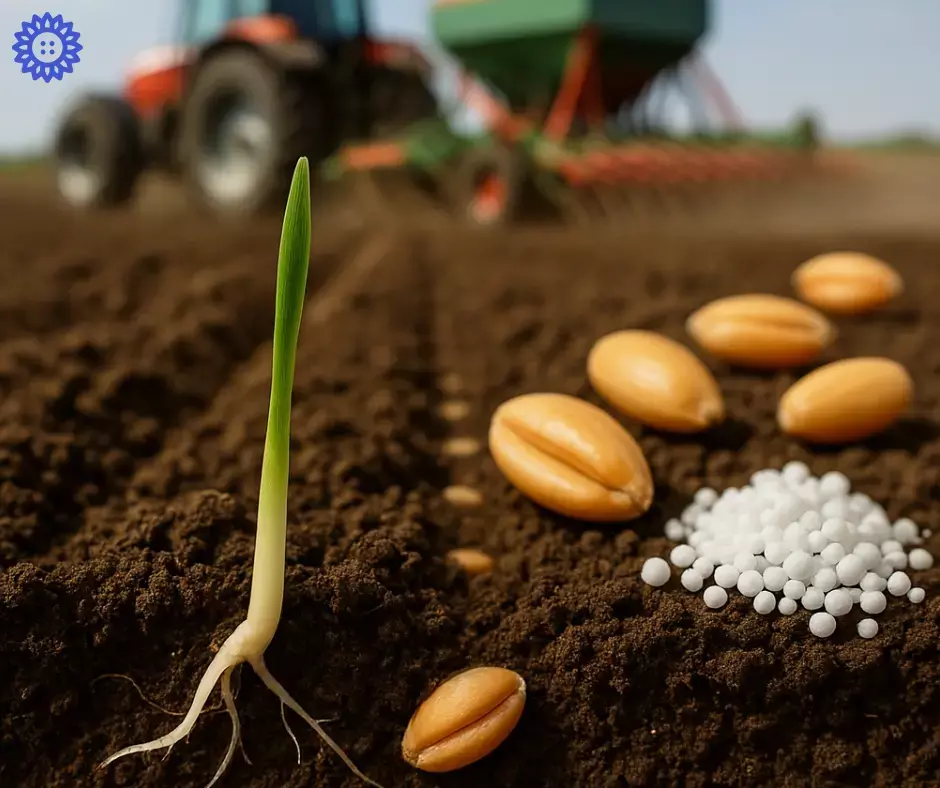16.04.2025, 09:08
Spring Planting Campaign in Kazakhstan: What Is Going According to Plan — and What Isn’t
The campaign has begun, covering all southern regions. Sown area to increase to 23.7 million ha, though some regions face delays in POL and fertilizer supply

The spring planting campaign has begun in Kazakhstan, covering all southern regions of the country. However, despite the start of fieldwork, some regions are facing organizational difficulties.
At an extended meeting chaired by Minister of Agriculture Aidarbek Saparov, it was noted that the supply of fuel and lubricants (POL) and mineral fertilizers in a number of regions is being handled unsystematically. Several regions are lagging behind the targets set out in the Roadmap, raising concerns within the ministry.
The meeting was attended by representatives of regional akimats, heads of sectoral departments, and state authorities. The ministry emphasized the need for coordinated and organized action in the field to avoid disruptions to the campaign.
According to preliminary data, the total sown area in 2025 is expected to reach 23.7 million hectares, an increase of 413 thousand hectares compared to last year. Of this, 16.6 million ha will be allocated to cereals and legumes, 3.3 million ha to oilseeds, 3.3 million ha to forage crops, and 83.4 thousand ha to potatoes.
The ministry underlined the importance of maintaining crop structure balance as part of the diversification program.
Soil preparation is ongoing: 1.2 million ha have undergone moisture closure, 1.1 million ha pre-sowing cultivation, and 858 thousand ha spring plowing. In southern regions, 529 thousand ha have already been sown.
To ensure uninterrupted fieldwork, 401 thousand tons of subsidized diesel fuel have been allocated. However, only 90.1 thousand tons have been shipped to date. Local authorities have been instructed to speed up contracting, payments, and fuel deliveries.
Agricultural machinery readiness is reported at 96%. The available fleet includes 139,000 tractors, 5,600 seeding complexes, 71,000 seeders, and 141,000 tillage implements.
Out of 2.3 million tons of prepared seeds, 846 thousand tons have been inspected, and 99% are certified as viable.
Nevertheless, discrepancies have been noted in fertilizer delivery reports between regional authorities and suppliers. The minister ordered synchronization of reports and tighter monitoring.
According to Vice Minister Yerbol Taszhurekov, 6,300 applications have been submitted under the "Ken Dala" program totaling 450 billion tenge, with 4,200 agricultural producers already financed.
Pest control was another key topic. In 2025, locusts are expected to affect 2.1 million ha—1 million ha less than last year. Surveys will be conducted across 38 million ha, involving over 4,600 specialists. In Turkestan Region, 75.6 thousand ha have already been treated using 256 units of equipment. Zhambyl Region will begin treatment on April 16.
The ministry urges regional administrations to maintain control over every stage—from seed preparation and contracting to resource delivery and machinery readiness. The state has provided full support: financing, subsidies, and access to preferential leasing. The key task is to meet agronomic standards and complete the campaign within optimal timeframes.
The meeting also reviewed investment project implementation in the agro-industrial sector. Despite successful practices in North Kazakhstan, some regions show weak investment activity. Underperforming areas have been instructed to step up efforts and ensure timely implementation of planned projects.
🔑 Key takeaways:
• The campaign has begun, covering all southern regions. Sown area to increase to 23.7 million ha, though some regions face delays in POL and fertilizer supply.
• Machinery readiness is high (96%), but actual fuel and fertilizer deliveries are lagging. Reporting discrepancies were noted.
• Locust pests may affect 2.1 million ha. Treatments are underway in Turkestan; Zhambyl starts April 16.